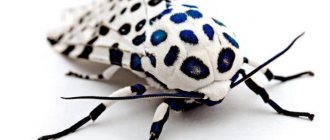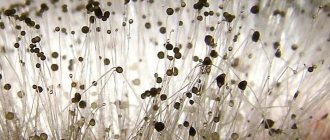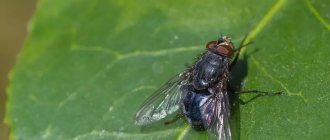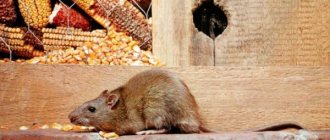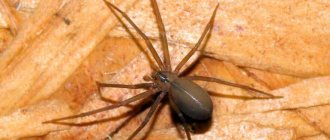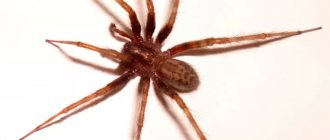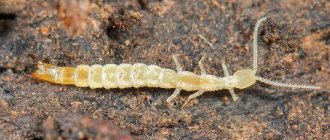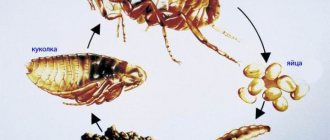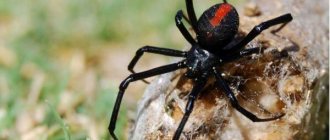The diversity of the Arachnida class not only increases the number of animal species, but also benefits the environment. What exactly is the importance of arachnids in nature and human life, you will learn by reading this article.
The material was prepared jointly with a teacher of the highest category
Shcherban Larisa Stepanovna.
Experience as a biology teacher - more than 19 years.
Useful properties of arachnids
Representatives of the class have a number of useful properties:
- being predators, they destroy insects that can harm agriculture;
- These animals themselves are also a link in the food chain. Spiders, ticks and other orders are prey for small mammals, toads, birds, lizards and other vertebrates;
- mites that live in soil participate in soil formation processes;
- Tick venom is used in medicines;
Pharmacists use the venom of arachnids to make sleeping pills and sedatives.
- people weave fabrics from the webs of some spiders;
Fig.1. Golden silk from spider's web
People have learned to use spider web threads in weaving. In Fig. 1 you can see golden silk from the web of Madagascar spiders.
- scorpions and spiders are used to prepare various dishes in Asian countries and China;
Fig.2. Dishes made from arachnids
- spiders catch their victims on the web, thereby regulating the number of insects;
Fig.3. Web Hunt
- By feeding on plant remains, earth mites fertilize the soil.
The purpose of spiders in nature
Surely in childhood, each of us felt a pang of pity, watching how a moth desperately fought in a tenacious web, and wondered why spiders are needed and what benefit they could have.
Even in the famous fairy tale “The Cluttering Fly,” the spider is presented as a notorious villain, and the fly as an innocent, unfortunate victim. However, in nature everything is much more complicated.
Beautiful, white butterflies with black dots that flutter over the beds in summer are cabbage butterflies that infect the cruciferous crop.
A cute light-colored moth, a whitefly, damages plant leaves and lays numerous offspring . These and many other harmful insects could have multiplied many times over if their numbers had not been controlled by spiders.
In fact, even a fly is not nearly as harmless as it might seem at first glance. Scientists have discovered several tens of thousands of pathogenic microbes on its paws.
And this insect reproduces at cosmic speed. The fly lives for about a month, during which time one female manages to lay about 3,000 eggs, which can bring new offspring within a few days.
It is easy to imagine the benefits spiders bring by controlling the number of flies in nature.
This predator spreads its web daily in the grass, as well as between tree branches. There are cases where several hundred insects got into the net every day.
However, even if you do not take into account such records, the benefits of spiders are obvious. Let not a hundred, but only 2-3 flies fall into one web. Then a hundred predators will destroy about 10 thousand harmful insects in a month.
In fact, there are many more spiders. According to scientists, more than 1 million individuals can live in an area of 1 hectare.
The benefits of these predators are enormous. Every day a spider is able to eat as much as it weighs. The diet of an adult consists not only of flies, but also of other parasites that can cause damage to fields, forests, and meadows.
Dangerous properties of arachnids
Despite the large number of beneficial properties, we should not forget that many arachnids are dangerous to human life and health.
For example, the karakurt spider, which lives in southern Europe and Asian countries, is dangerous for animals (deadly for horses and camels). It poses the same danger to humans, especially to children’s bodies.
Scorpion venom causes swelling, redness of the bite site, nausea and convulsions.
TOP 1 article that is read along with this
- 1. The importance of arthropods
It should also be remembered that most ticks are carriers of dangerous diseases. For example:
- Taiga and dog ticks can infect encephalitis or tularemia as they are carriers of these diseases;
- Scabies parasitizes human skin and is the causative agent of scabies, causing itching and redness of the skin;
- Bed mites feed on exfoliated skin particles and cause allergic reactions;
- A number of mites parasitize the skin of domestic animals and can easily get on human skin;
- Flour mites live in flour, thereby making it unfit for consumption;
- Cheese mites spoil cheese;
- Spider mites cause serious damage to the harvest of fruit trees and shrubs.
Many species of arachnids are listed in the Red Book. Among them are the common salpuga, as well as some species of scorpions and spiders.
About the benefits of spiders: a_tushin — LiveJournal
Oddly enough, it turns out that spiders often “sharing” housing with a person bring him more benefit than harm. And here's the thing...
People like to think of their homes as securely sealed off from the outside world, but many types of spiders can be found in our homes. Some are accidentally trapped, while others are short-term visitors. Individual individuals find wonderful premises for themselves, where they live happily and have numerous offspring. These arachnids tend to be fairly secretive, and almost all of the species you might encounter are neither aggressive nor dangerous. They can also benefit by eating harmful insects, and some even eat other spiders.
A team of researchers conducted a visual inspection of 50 houses in North Carolina, just to find out what arthropods live under the roofs of human homes. Every house they visited was home to spiders, too. The most common species the researchers encountered were web spiders and hay spiders.
Both species weave webs from spider webs, where they then wait for prey to be caught. Haymaking spiders sometimes leave their webs to hunt other spiders in their own territory, pretending to be prey to lure relatives to dinner.
Although they are generalist predators, capable of eating anything they can catch, spiders regularly catch pests and even disease-carrying insects such as mosquitoes and midges. There is even one species of jumping spider that prefers to eat blood-fed mosquitoes in African homes.
Thus, when you kill a spider, you not only deprive it of its life, but also deprive your home of an important and useful predator
Most people are afraid of spiders. They have many legs, and almost all of them are poisonous, although, as a rule, the poison is too weak to cause any harm to humans, even if they manage to pierce our skin, which is unlikely. Even entomologists themselves sometimes suffer from arachnophobia. Some experienced researchers have been known to have difficulty overcoming their fear when working with these fascinating creatures. But if they succeed, why are we worse?
Spiders do not want to see us and generally prefer to avoid people, since we are much more dangerous for them than vice versa. Cases of spider bites to humans are extremely rare. Although there are several medically dangerous species, such as the black widow and recluse spider, even their bites are very uncommon and rarely cause serious problems.
source
Spiders - what are they: types
Researchers know about 42 thousand species of spiders. Spiders can be divided into three large suborders, which differ mainly in the structure of the jaws, or more precisely, in the position of the chelicerae relative to the longitudinal axis of the body.
Suborder Orthognatha
More often, representatives of this suborder are called migalomorphs. They are characterized by the presence of thick hairs, large sizes and a primitive structure of the jaws - the claw is directed downwards and grows only on the upper jaw. The respiratory system is represented by pulmonary sacs.
The majority of mygalomorphs live in warm climates. They make burrows underground.
Orthognatha includes:
- tarantula spiders
- funnel spiders
- ctenizidae
- digger spiders
Representative of the suborder Araneomorpha
Suborder Araneomorpha
Almost all other species of spiders known to naturalists belong to the large group Labidognatha or Araneomorpha. They differ in that both jaws are equipped with claws. The respiratory system is represented by the trachea.
Types of spiders that catch prey without a net:
- crab spiders
- jumping spiders
- wolf spiders
Types of spiders using a trapping net:
- linifid spiders
- web spiders
- funnel spiders, or house spiders
- long-legged spiders
- orb weaving spiders
Among the araneomorphic spiders, there are also those that are not capable of producing cribellum, the substance from which spiders produce strong web silk, and those that produce it.
Suborder Mesothelae
Lyphistiomorphic spiders are distinguished by the fact that the chelicerae are spread out to the side rather than pointing downwards. This position is considered more evolutionarily advanced. But this suborder is considered the most primitive; traces of it were found in Carboniferous deposits. Spiders have archaic pulmonary sacs and four pairs of arachnoid warts, which have not yet been moved to the end of the abdomen. They live in earthen burrows that are closed with a lid. Signal threads radiate from the minks. Although one species prefers caves, where it makes web tubes on the walls.
These include:
- arthropod spiders
- primitive arthrolycosid spiders
- primitive arthromigalid spiders
Blue tarantula spider
general characteristics
The second name for the class of arachnids is arachnids . Their origin is connected with ancient Greek mythology. The experienced weaver Arachne dared to challenge Athena herself. The goddess could not bear such impudence and turned the woman into a spider.
The body of arachnids has a pronounced division into 2 sections - cephalothorax and abdomen . Arachnids have 4 pairs of limbs that are used for movement. Another 2 pairs are modified into chelicerae and pedipalps. They are located in the front of the cephalothorax near the mouth opening.
The body length of arachnids ranges from 0.08 mm (some types of mites) to 21 cm (black scorpion). Since the body of arachnids is covered with a dense chitinous shell, their soft tissues cannot grow evenly.
As a result, as animals grow older, they molt several times.
Arachnids inhabit almost the entire planet. They are not found only in the Far North and Antarctica. Most species are land animals, although there are also aquatic ones. Most often, arachnids are predators. They hunt insects and crustaceans. However, many of them cannot digest food inside their body. The animals inject saliva into the victim, which can dissolve soft tissue and turn it into a mushy mass, which is then sucked up.
Classification Features
Today, the planet is home to more than 110,000 species of arachnids. All of them are divided into 13 squads. In addition, scientists know of 4 more orders, representatives of which have become extinct. The most numerous are the following groups:
- spiders - 44.9 thousand species;
- acariform mites - 41.9 thousand;
- parasitiform mites - 12.3 thousand;
- haymakers - 6.5 thousand.
The smallest group consists of holotyrid mites, of which there are only 27 species. When classifying arachnids, several factors are taken into account. Among them, the most significant are:
- body shape;
- the degree of its segmentation;
- characteristics of appendages.
As science develops, more and more interesting information appears.
For example, scientists have found that the DNA structure of harvestmen is more similar to scorpions than to spiders.
